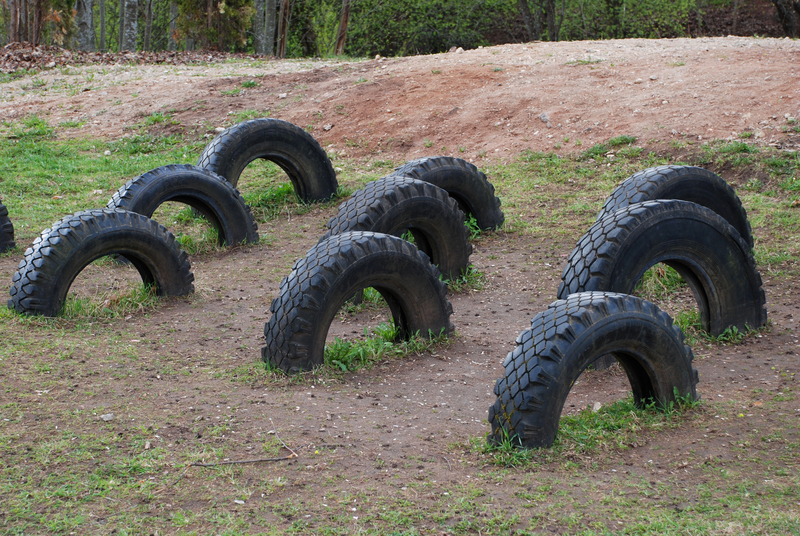Stay Thrifty While Tackling Bulky Waste in Your Home: A Complete Guide
Managing bulky waste in your home can seem challenging, especially if you want to minimize expenses and your environmental impact. From worn-out furniture to old appliances, these items tend to accumulate, taking up valuable space and posing disposal challenges. If you're looking to stay thrifty while tackling bulky waste in your home, there are plenty of smart, sustainable strategies you can use to organize, de-clutter, and responsibly dispose of or repurpose large household items. Read on for a comprehensive guide packed with actionable tips and creative ideas!
Understanding Bulky Waste in Households
Bulky waste refers to large household items that are difficult to dispose of via regular curbside trash collection. These often include:
- Furniture (sofas, mattresses, dressers, tables, chairs)
- Appliances (refrigerators, ovens, washing machines)
- Large electronics (televisions, desktop computers)
- Outdoor equipment (grills, lawnmowers, bicycles)
- Construction debris (doors, windows, carpets)
These items are not only cumbersome to move but also expensive to discard through commercial services. Fortunately, there are cost-effective and even money-making alternatives to simply hiring a junk removal company.

The Thrifty Mindset: Save Money & Reduce Waste
The key to affordable bulky item removal is adopting a thrifty mindset. This means looking for opportunities to reuse, upcycle, donate, sell, or responsibly recycle items wherever possible before turning to fee-based options. Not only will you save money, but you'll also reduce landfill waste and give your old items a new lease on life!
Benefits of Thrifty Bulky Waste Management
- Lower costs: Avoid or reduce bulky waste collection fees.
- Environmental impact: Less waste goes to landfill and more materials are recycled or reused.
- Community support: Donating or gifting usable items helps those in need.
- Extra space: De-cluttering makes your home more livable and organized.
- Potential profit: Sell valuable unwanted items for extra cash.
Step-by-Step Guide to Thrifty Bulky Waste Removal
1. Assess and Sort Your Bulky Waste
Start by taking a thorough inventory of the large items you want to get rid of. Sort them into categories:
- Still usable: Items that work as intended or can be easily repaired.
- Repairable: Minor fixes could restore their function.
- Broken or irreparable: Not worth repairing, but may have recyclable components.
This step will help you decide whether to sell, donate, recycle, or finally dispose of each piece.
2. Sell What You Can
Why pay for bulky waste removal when you can make some money first? Here's how you can turn your clutter into cash:
- Online marketplaces: Utilize sites like Facebook Marketplace, eBay, Craigslist, or Nextdoor to list usable furniture, appliances, and electronics.
- Host a yard sale: This is a great way to clear out multiple items in a weekend.
- Consignment shops: Some local stores will sell higher-end furniture or decor on your behalf for a small fee or percentage.
- Specialist buyers: Retro or antique shops may pay for old furniture, bikes, or decor.
Selling not only offsets removal costs but also extends the life cycle of your items.
3. Donate Bulky Items to Charity
Many charitable organizations accept large household items in good condition, and some even offer free pickup. Popular options include:
- Salvation Army
- Goodwill
- Habitat for Humanity ReStore
- Local shelters and community centers
Always check their guidelines--some charities have restrictions on the types of items they accept, especially when it comes to mattresses, upholstered furniture, or electronics. Gifting to charity is an excellent way to stay frugal while handling bulky waste and help those in need at the same time.
4. Offer Items for Free Pickup
If time is of the essence or the item doesn't meet donation criteria, offering it for free can be an effective solution. Try:
- Freecycle Network: Connects people in your area with unwanted items to give away.
- Curb alerts: Post a notice on Craigslist or Facebook Marketplace that an item is available for free outside your home.
- Community apps: Nextdoor and Buy Nothing groups are ideal for connecting with neighbors in need.
5. Repurpose, Upcycle, or Refurbish
Sometimes the thriftiest solution is a creative one! Consider transforming bulky waste into something useful:
- Old doors: Convert into headboards, tables, or garden benches.
- Dressers and cabinets: Repurpose as storage solutions for your garage, basement, or backyard shed.
- Appliance parts: Salvage removable components, like metal or wiring, for other projects.
- Mattresses: Separate materials (foam, metal, wood) for crafts, garden use, or recycling.
Upcycling can often save you the cost of buying new home items and is a fun way to personalize your space!
6. Explore Local Recycling and Bulk Collection Options
- Check with your municipality: Many cities have annual or quarterly bulky item collection days at little or no cost. Visit your city or county website for schedules and accepted items.
- Drop-off centers: Local recycling centers sometimes accept large appliances, electronics, or scrap metal for free, or at a reduced rate.
- Retail take-back programs: Appliance and electronics retailers (like Best Buy, Home Depot, or Lowe's) may offer haul-away or recycling for old devices when you purchase a replacement.
Whenever using paid curbside bulky waste removal, try to consolidate items to get the most value out of each pickup fee.
7. DIY Bulky Waste Removal: Save on Labor Fees
If you have access to a vehicle and some extra hands, a do-it-yourself bulky waste run can save you the cost of hiring a service. Tips for DIY removal include:
- Borrow or rent a pickup truck or trailer.
- Enlist friends or family for heavy lifting.
- Wear gloves and use safety equipment to avoid injury.
- Call ahead to confirm drop-off fees and restricted items at your chosen facility.
While this option requires effort, it's often the cheapest way to tackle bulky waste in your home.
Quick Reference: Where to Take Common Bulky Waste
| Item | Best Disposal Options |
|---|---|
| Mattress |
|
| Appliances |
|
| Furniture |
|
| Electronics |
|
Cost Comparison of Bulky Waste Solutions
How much can you save by taking a thrifty approach?
- Junk hauling services: Typically charge between $150-$600, depending on the size and quantity of items.
- Municipal bulk pickup: Often free or low-cost, but limited in frequency and acceptable items.
- DIY removal to the dump: Costs vary from $10-$50 per load (vehicle rental extra).
- Selling or donating: Puts money in your pocket or provides tax deductions.
By staying thrifty while handling bulky waste at home, you could save hundreds of dollars per year--while also helping your community and environment.
Tips to Prevent Bulky Waste Buildup
- Be mindful with purchases: Choose quality over quantity and buy only what you truly need.
- Maintain and repair: Regular maintenance extends the life of furniture and appliances.
- Plan for upgrades: Sell or donate existing items before bringing in new ones.
- Organize regularly: Schedule quarterly or semi-annual de-cluttering sessions to avoid accumulation.
A proactive approach means less waste to contend with--and more room to enjoy your home!

Frequently Asked Questions About Thrifty Bulky Waste Management
Q: What is the cheapest way to get rid of bulk items?
A: The least expensive options are giving items away for free, donating, or DIY hauling to a local recycling center. If your city has a free pickup day, plan ahead and set stuff curbside. Otherwise, try online "curb alert" platforms or local community groups.
Q: How do I know if my furniture or appliance can be donated?
A: If the item is clean, functional, and not excessively worn or damaged, many charities will accept it. Check the donation criteria on the charity's website before scheduling a pickup.
Q: Is it illegal to leave bulky items on the curb?
A: In many areas, it is prohibited to put large waste curbside outside scheduled pickups. You may incur fines if you do not follow local regulations. Always confirm your city's rules.
Q: Can I make money from old appliances or metal waste?
A: Yes! Scrap metal buyers will often pay for old appliances, radiators, or bikes. Prices vary based on metal type and current market rates.
Q: Are there any items I cannot donate, sell, or recycle?
A: Some items--like mattresses with bedbugs, broken electronics, or upholstered furniture with heavy stains--may not be accepted by charities or recycling centers. Check before hauling.
Conclusion: Stay Smart, Stay Green, Stay Thrifty!
Bulky waste doesn't have to be a financial burden or an environmental liability. By embracing a resourceful, money-saving mindset, you can effectively stay thrifty while tackling bulky waste in your home. Evaluate each item for potential resale, donation, or creative reuse, and turn to municipal recycling as a final step. Not only will you slash expenses and free up space, but you'll also be making a positive impact on your community and the planet.
So, next time you're confronted with a pile of old furniture or appliances, remember--staying thrifty with your bulky waste removal is more than possible. It's smart, sustainable, and surprisingly rewarding!
```